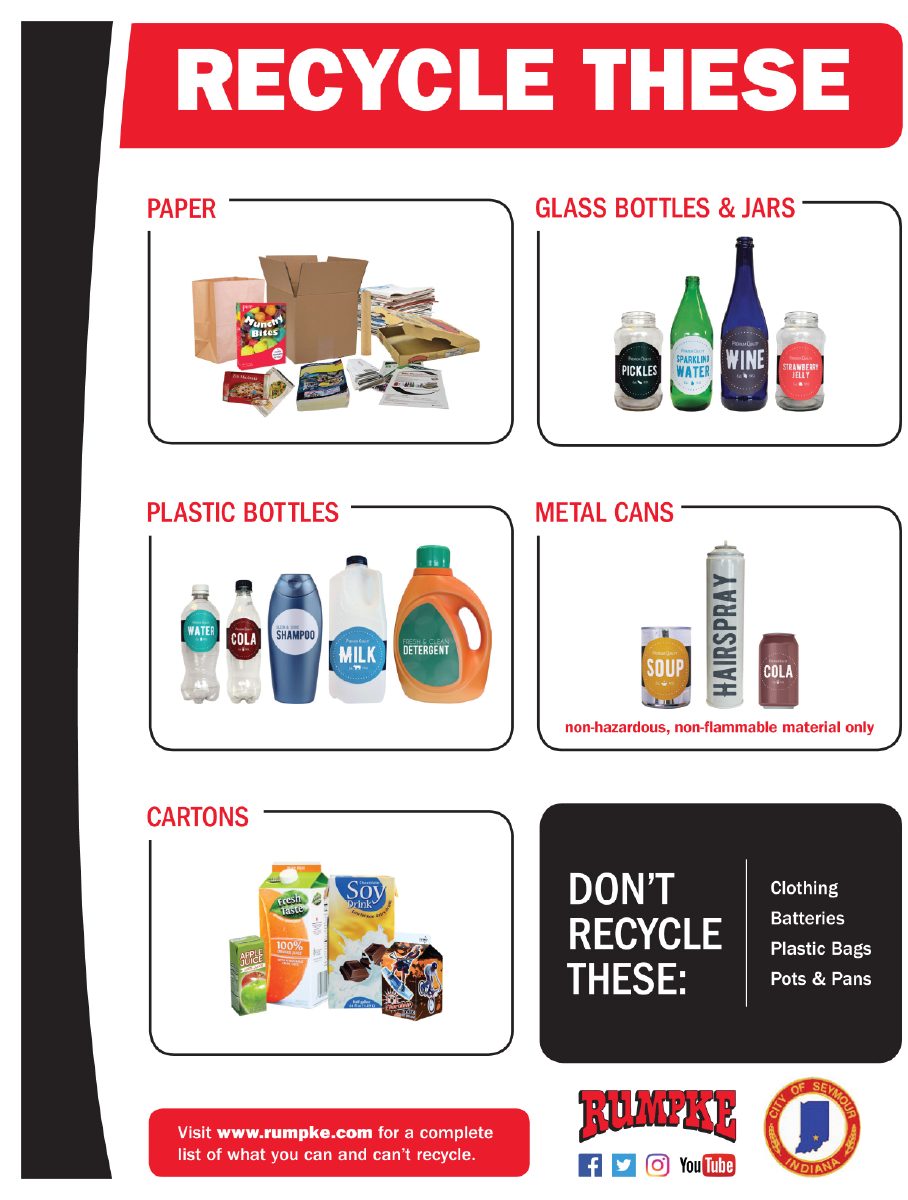
Sometimes it can be difficult to remember exactly what is accepted in the recycling bin at home or work.
For one thing, what is accepted has changed throughout the years, and sometimes finding information is difficult because each community has different resources.
For the city of Seymour, it’s actually simpler than people think, said Bernie Bryant, the department of public works’ environmental educator.
The city accepts paper, glass bottles and jars, plastic bottles and jugs, metal cans and cartons as recyclable materials to be put in totes.
What doesn’t get recycled? Clothing, batteries, plastic bags, styrofoam, pots and pans and packing material from online orders. That packing material can often be confusing because it has a recycle symbol on it, but the city’s recycling service does not accept it.
City workers time and time again find Styrofoam and plastic bags in recyclable totes, Bryant said. The plastic bags used to be accepted, but are no longer taken at sorting facilities because of their impact on equipment.
They can be taken to Walmart and JayC Food Stores to be recycled though, Bryant said.
The number system for plastics also does not apply to the city.
“People always look for the numbers, but we don’t do that anymore,” she said. “People also think since items are similar that they can be recycled, so they ‘wish-cycle’ it and place it in the tote.”
Since the department as seen these situations occur daily, it has tried to educate the public in a variety of ways.
The department issues green tags to residents when something incorrect is found in the recyclable tote. The tags identify the items on one side and on the other lists what is accepted.
It also lists information on the city’s website, and field questions from the office at 865 F. Avenue East, in Freeman Industrial Park.
Despite those efforts, there still seems to be confusion about what is accepted, Bryant said.
That’s why more than a year ago, the department began posting recycling information on its Facebook page.
Many of the posts include photos of things the crews have found as they operate routes. Some of the photos include stuffed totes, vehicles blocking the crews’ access to totes, incorrect materials and more.
“I think posting the photos has definitely helped,” she said. “People ask more questions now and have more awareness.”
Bryant sometimes takes photos, and other times, crews will take them and submit them for her to post. They’re posted as the photos come in, so it’s almost a real time Facebook page.
It also helps get the information to residents quickly, she said.
“It’s great to share that information quickly and to many people,” she said. “It doesn’t seem people want to search out our website, but if it’s part of their news feed, then they’re more likely to see it.”
